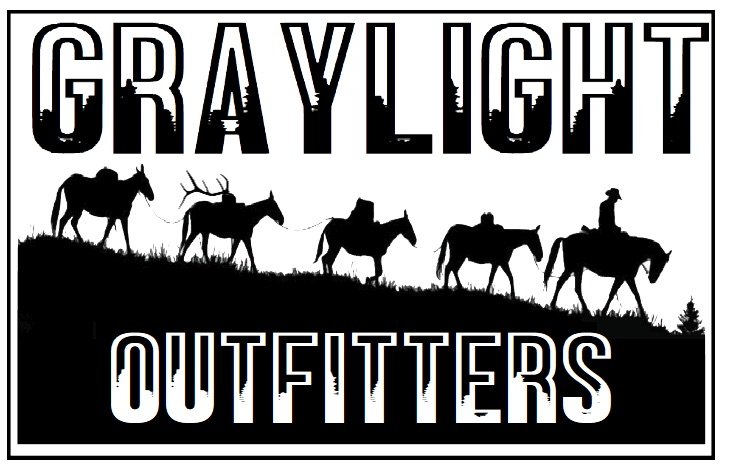Introduction
Elk hunting is a time-honored tradition that provides outdoor enthusiasts with an unparalleled connection to nature and a challenging pursuit. Among the prime destinations for elk hunting, Wyoming stands out for its vast and pristine wilderness areas. This essay aims to provide new and intermediate hunters with an extensive guide to elk hunting in Wyoming, focusing on the state's wilderness areas, hunting practices, regulations, gear, safety considerations, and ethical hunting principles.
I. Understanding Elk and Their Habitat
Elk (Cervus canadensis) are majestic and powerful creatures that inhabit various ecosystems across North America. In Wyoming, they thrive in diverse environments, from high mountain ranges to valleys and grasslands. To successfully hunt elk, understanding their behavior, habitat preferences, and seasonal movements is crucial.
Elk tend to move to higher elevations in the summer to escape heat and insects, while they descend to lower elevations during the harsh winter months to find food. During the hunting season, which typically spans from September through October, elk can be found in transition zones between these elevations, making them more accessible to hunters.
II. Wilderness Areas in Wyoming
Wyoming boasts several pristine wilderness areas that offer abundant opportunities for elk hunting. Some of the most notable include:
Absaroka-Beartooth Wilderness: Located in northwestern Wyoming, this wilderness area is known for its rugged terrain, alpine meadows, and abundant wildlife.
Bridger Wilderness: Situated in the Wind River Range, this area offers a mix of dense forests and open spaces, providing excellent elk habitat.
Teton Wilderness: Adjacent to Grand Teton National Park, this wilderness area offers a unique hunting experience with stunning mountain views.
Shoshone National Forest: The nation's first national forest, this area features vast expanses of forested lands where elk can be found.
Washakie Wilderness: Part of the Shoshone National Forest, this wilderness area provides a combination of forested areas and open meadows.
III. Hunting Practices and Strategies
For new and intermediate hunters, mastering effective hunting practices is essential for a successful and ethical hunt:
Scouting: Prior to the hunting season, spend time scouting the chosen wilderness area to understand elk movements, feeding grounds, and water sources.
Spot and Stalk: This technique involves spotting elk from a distance and then stealthily approaching for a shot. Effective camouflage, knowledge of wind direction, and patience are key.
Calling: Elk calls can mimic their vocalizations, attracting bulls during the rut (mating season). Learning to use calls effectively can increase your chances of encountering elk.
Still Hunting: This method involves moving slowly and quietly through the wilderness, scanning the environment for signs of elk. It's a patient approach that requires a keen eye for details.
Backpacking Hunts: For those seeking a more immersive experience, backpacking hunts involve carrying all necessary gear and camping in the wilderness. This allows for extended hunting periods in remote areas.
IV. Regulations, Gear, and Safety
Before embarking on an elk hunting adventure, hunters must be well-versed in state regulations, appropriate gear, and safety considerations:
Hunting Licenses and Tags: Wyoming requires hunters to obtain appropriate licenses and tags before hunting. Regulations vary based on residency and hunting zones.
Firearm and Bow Selection: Choose a firearm or bow that you are comfortable and proficient with. Practice extensively to ensure accurate and ethical shots.
Clothing and Gear: Dress in layers to adapt to changing weather conditions. Essential gear includes optics (binoculars, spotting scopes), navigation tools (GPS, maps), and field dressing equipment.
Safety Measures: Inform someone about your hunting plans, carry communication devices, and be prepared for emergencies. Wilderness areas can be challenging, so prioritize safety at all times.
V. Ethical Hunting Principles
Hunting is not only about the harvest but also about respecting wildlife, the environment, and ethical principles:
Fair Chase: Adhere to the principles of fair chase, which involve giving elk a reasonable chance to escape and not exploiting their behaviors.
Leave No Trace: Minimize your impact on the environment by practicing "Leave No Trace" principles. Pack out all trash and minimize disturbance to the natural habitat.
Respect for Wildlife: Approach wildlife with respect and observe from a distance. Avoid disturbing elk during sensitive periods like calving.
Hunter Education: Continuously educate yourself about hunting regulations, conservation efforts, and ethical hunting practices. Knowledge is a key component of responsible hunting.
Conclusion
Elk hunting in Wyoming's wilderness areas provides a thrilling and enriching experience for new and intermediate hunters. By understanding elk behavior, choosing the right wilderness area, mastering effective hunting practices, adhering to regulations, prioritizing safety, and embracing ethical principles, hunters can forge a deep connection with nature while contributing to conservation efforts and preserving the legacy of this time-honored tradition.
